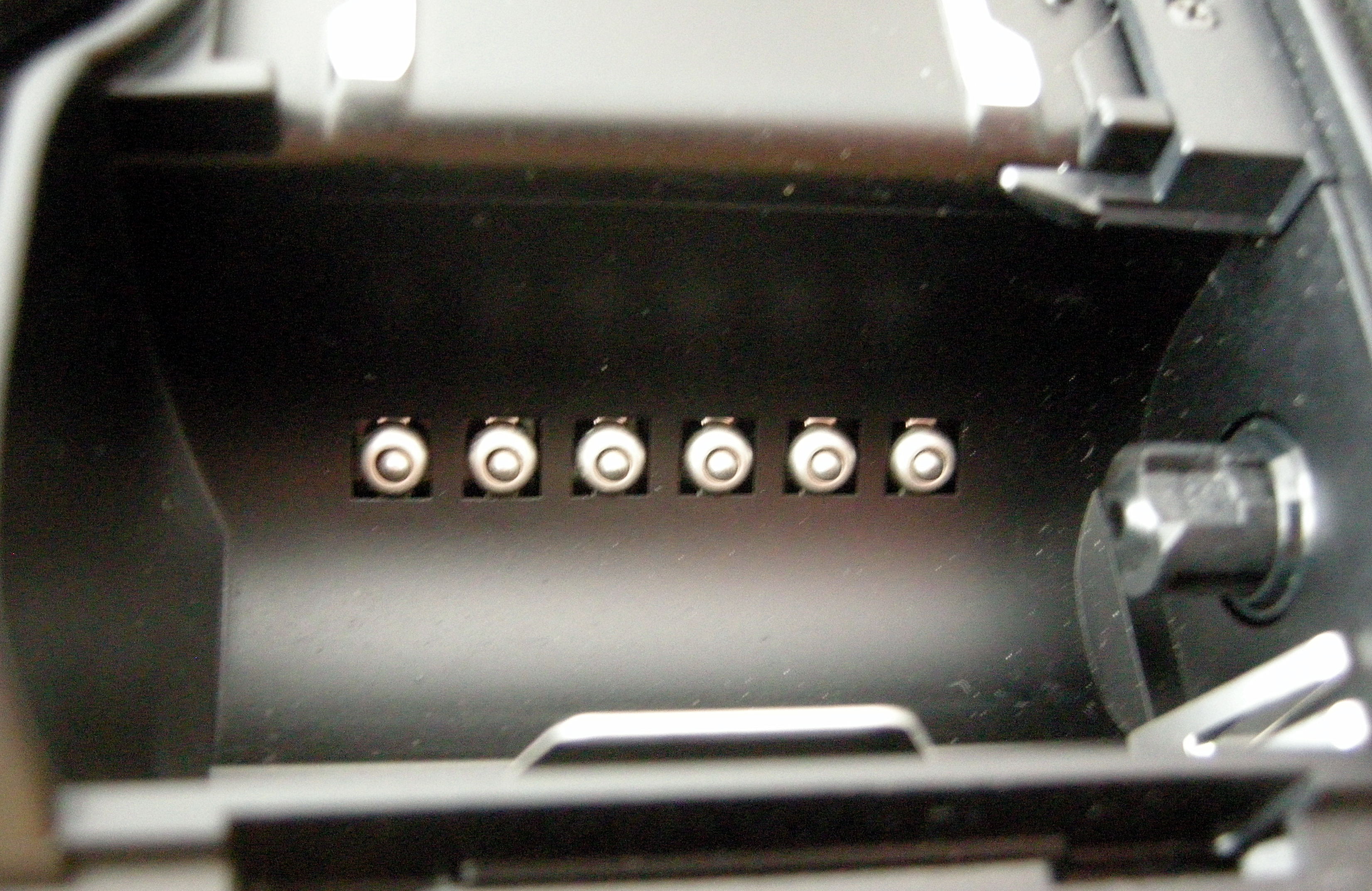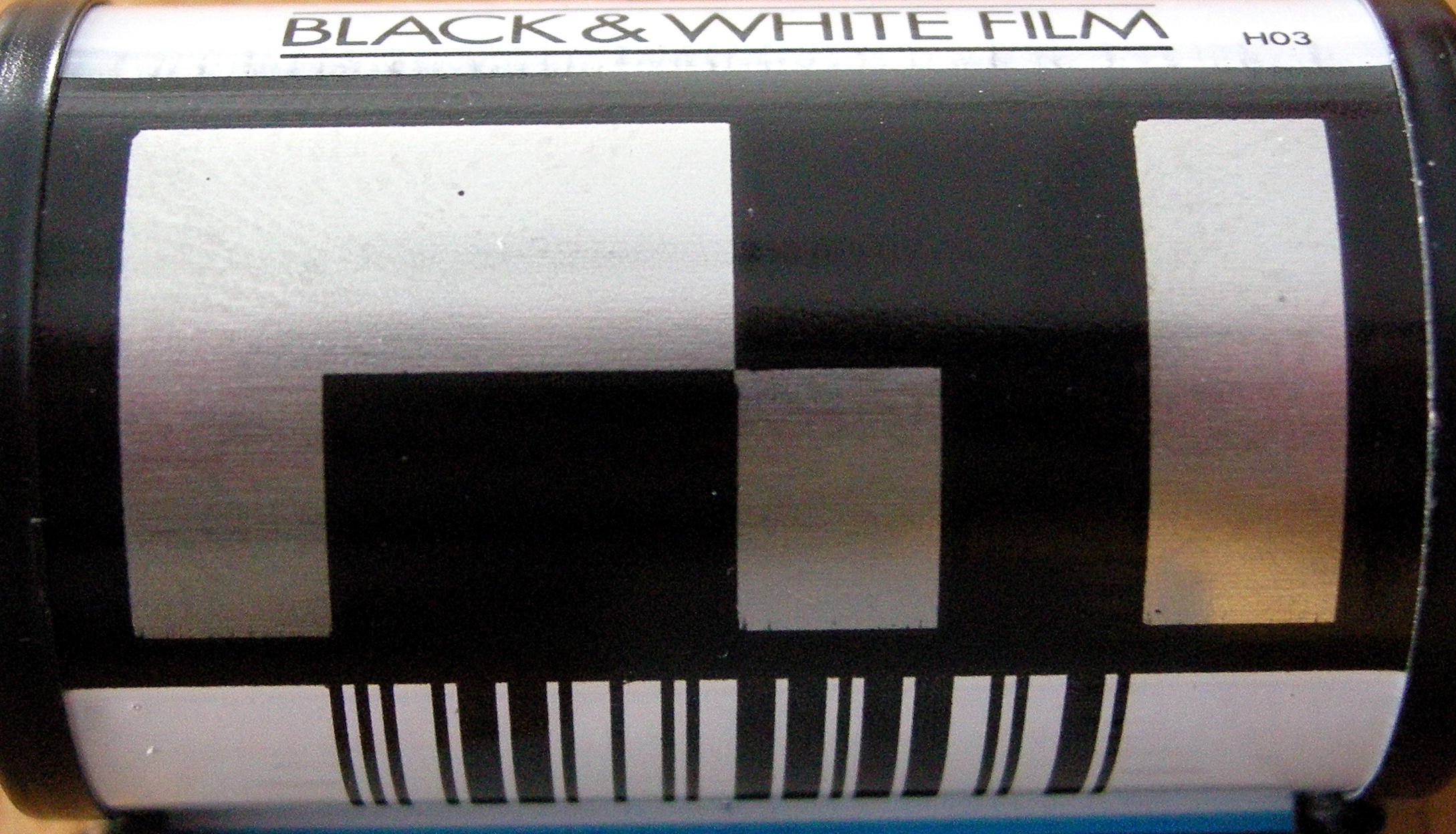DX-film encoding system
DX-film sensors inside a film compartment of a modern film camera.
Black and white squares of the DX encoding system on a film cassette.
To use a film in a camera it is essential to pass the sensitivity information of the film emulsion to the built-in exposure meter of that particular camera. Kodak was the first to introduce film emulsion sensitivity data. It was called Digital indeX = DX. On January 3, 1983 a Kodak press release introduced a system for marking 135 (35 mm.) and APS films. In March that same year the Kodacolor VR-1000 had the honour to be the first film ever with that code. The cassettes containing films with a sensitivity of 25 - 5000 ISO (15 - 38 DIN) are marked via a square 'black and white' fields. Inside the camera sensors are 'reading' the sensitivity and pass that info to the built-in exposure meter. Many film and camera manufacturers were making use of that system as the photographer did not have to set the exposure meter of the camera. Nikon Corporation also introduced that system. In 1985 the Nikon L35AF 2 compact camera was the first featuring DX-reading. The Nikon F-301 / N2000 was in 1985 the first Nikon single lens reflex camera offering that feature. All Nikon film cameras introduced after that year were fitted with the DX-reading system. For more info about the DX encoding system see this site
|

